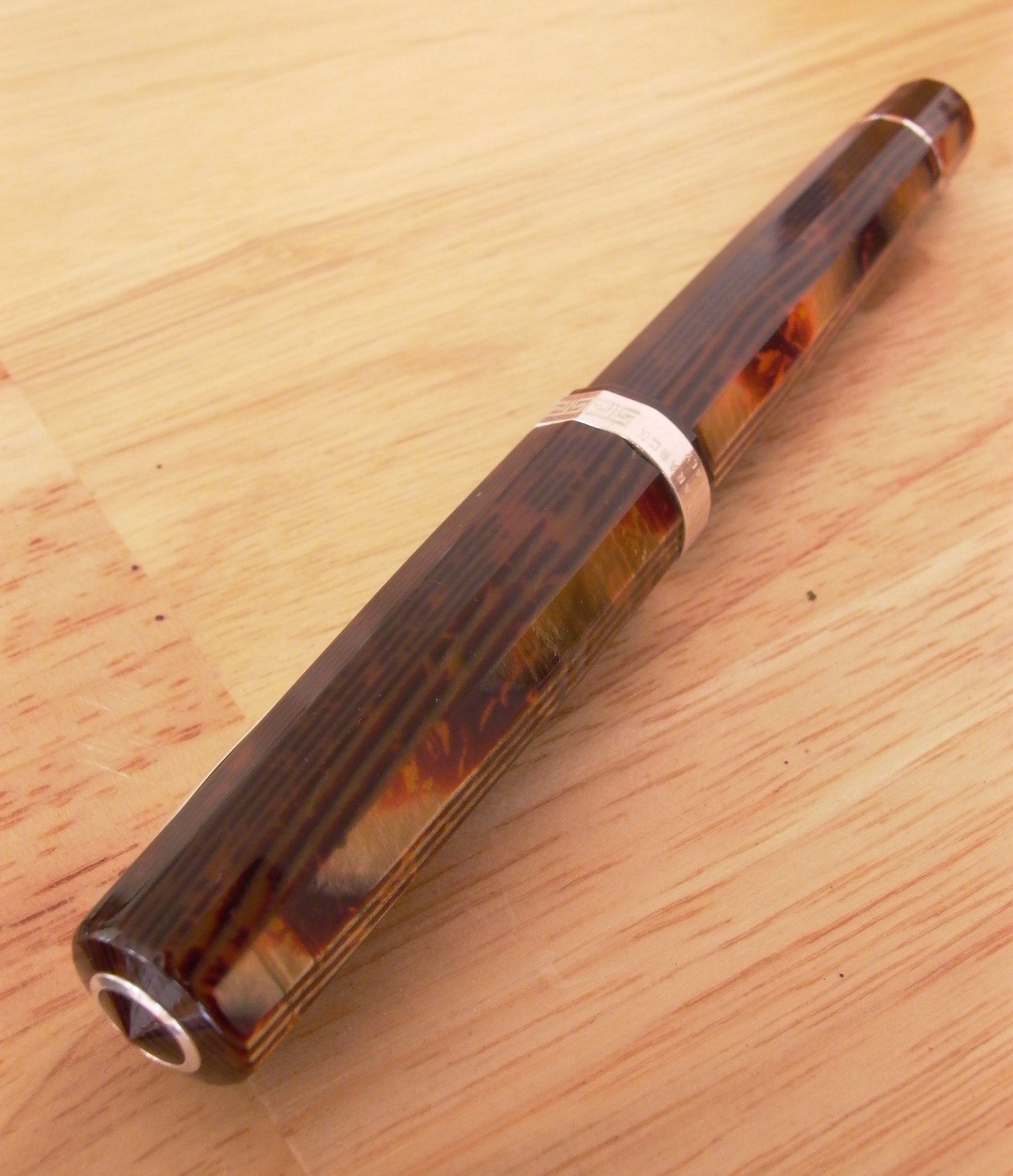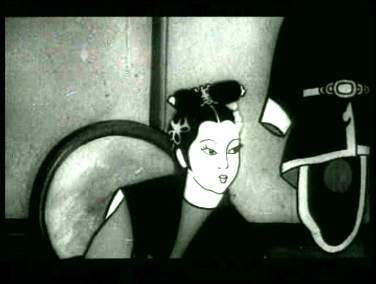|
Cel
A cel, short for '' celluloid'', is a transparent sheet on which objects are drawn or painted for traditional, hand-drawn animation. Actual celluloid (consisting of cellulose nitrate and camphor) was used during the first half of the 20th century. Since it was flammable and dimensionally unstable, celluloid was largely replaced by cellulose acetate. With the advent of computer-assisted animation production (also known as digital ink and paint), the use of cels has been all but obsolete in major productions. Walt Disney Animation Studios stopped using cels in 1990, when Computer Animation Production System (CAPS) replaced this element in their animation process. In the next decade and a half, other animation studios phased cels out as well in favor of digital ink and paint. Technique Generally, the characters are drawn and painted on cels and laid over a static background painting or drawing. This reduces the number of times an image has to be redrawn and enables studios ... [...More Info...] [...Related Items...] OR: [Wikipedia] [Google] [Baidu] |
Cellulose Nitrate
Nitrocellulose (also known as cellulose nitrate, flash paper, flash cotton, guncotton, pyroxylin and flash string, depending on form) is a highly flammable compound formed by nitrating cellulose through exposure to a mixture of nitric acid and sulfuric acid. One of its first major uses was as guncotton, a replacement for gunpowder as propellant in firearms. It was also used to replace gunpowder as a low-order explosive in mining and other applications. In the form of collodion, it was also a critical component in an early photographic emulsion, the use of which revolutionized photography in the 1860s. In the 20th century, it was adapted to automobile lacquer and adhesives. Production The process uses a mixture of nitric acid and sulfuric acid to convert cellulose into nitrocellulose. The quality of the cellulose is important. Hemicellulose, lignin, pentosans, and mineral salts give inferior nitrocelluloses. In organic chemistry, nitrocellulose is a nitrate ester, not a nitr ... [...More Info...] [...Related Items...] OR: [Wikipedia] [Google] [Baidu] |
Cellulose Acetate
In biochemistry, cellulose acetate refers to any acetate ester of cellulose, usually cellulose diacetate. It was first prepared in 1865. A bioplastic, cellulose acetate is used as a film base in photography, as a component in some coatings, and as a frame material for eyeglasses; it is also used as a synthetic fiber in the manufacture of Cigarette filter, cigarette filters and Playing card, playing cards. In cellulose acetate film, photographic film, cellulose acetate film replaced nitrate film in the 1950s, being far less flammable and cheaper to produce. Water-soluble cellulose acetate (WSCA) has been used as a Prebiotic (nutrition), dietary fiber (prebiotic), in relation with weight loss and Akkermansia muciniphila. History In 1865, French chemist Paul Schützenberger discovered that cellulose reacts with acetic anhydride to form cellulose acetate. The German chemists Arthur Eichengrün and Theodore Becker invented the first soluble forms of cellulose acetate in 1903. In 190 ... [...More Info...] [...Related Items...] OR: [Wikipedia] [Google] [Baidu] |
Traditional Animation
Traditional animation (or classical animation, cel animation, or hand-drawn animation) is an animation technique in which each frame is drawing, drawn by hand. The technique was the dominant form of animation of the 20th century, until there was a shift to computer animation in the industry, such as Traditional animation#Modern process, digital ink and paint, a modern form of traditional animation methods, and 3D computer animation. Process Writing and storyboarding Animation production usually begins after a story is converted into an animation film script, from which a storyboard is derived. A storyboard has an appearance somewhat similar to comic book panels, and is a shot by shot breakdown of the staging, acting and any camera moves that will be present in the film. The images allow the animation team to plan the flow of the Plot (narrative), plot and the composition of the imagery. Storyboard artists will have regular meetings with the film director, director and may redra ... [...More Info...] [...Related Items...] OR: [Wikipedia] [Google] [Baidu] |
Celluloid
Celluloids are a class of materials produced by mixing nitrocellulose and camphor, often with added dyes and other agents. Once much more common for its use as photographic film before the advent of safer methods, celluloid's common present-day uses are for manufacturing table tennis balls, musical instruments, combs, office equipment, fountain pen bodies, and guitar picks. History Nitrocellulose Nitrocellulose-based plastics slightly predate celluloid. Collodion, invented in 1848 and used as a wound dressing and an emulsion for photographic plates, is dried to a celluloid like film. Alexander Parkes The first celluloid as a bulk material for forming objects was made in 1855 in Birmingham, England, by Alexander Parkes, who was never able to see his invention reach full fruition, after his firm went bankrupt due to scale-up costs. Parkes patented his discovery as Parkesine in 1862 after realising a solid residue remained after evaporation of the solvent from photographic c ... [...More Info...] [...Related Items...] OR: [Wikipedia] [Google] [Baidu] |
Cel Shading
Cel shading or toon shading is a type of non-photorealistic rendering designed to make 3D computer graphics appear to be flat by using less shading color instead of a shade gradient or tints and shades. A cel shader is often used to mimic the style of a comic book or cartoon and/or give the render a characteristic paper-like texture. There are similar techniques that can make an image look like a sketch, an oil painting or an ink painting. The name comes from ''cels'' (short for celluloid), clear sheets of acetate which are painted on for use in traditional 2D animation. Basic process The cel-shading process starts with a typical 3D model. Where cel-shading differs from conventional rendering is in its non-photorealistic shading algorithm. Conventional smooth lighting values are calculated for each pixel and then quantized to a small number of discrete shades to create the characteristic "flat look", where the shadows and highlights appear as blocks of color rathe ... [...More Info...] [...Related Items...] OR: [Wikipedia] [Google] [Baidu] |
History Of Animation
Animation, the method for creating moving pictures from still images, has an early history and a modern history that began with the advent of celluloid film in 1888. Between 1895 and 1920, during the rise of the cinematic industry, several different animation techniques were developed or re-invented, including stop-motion with objects, puppets, clay or cutouts, and drawn or painted animation. Hand-drawn animation, which mostly consisted of a succession of still images painted on cels, was the dominant technique of the 20th century and became known as traditional animation. Today, computer animation is the dominant animation technique in most regions, although traditional animation, like Japanese anime and European hand-drawn productions, remains popular outside of the US. Computer animation is mostly associated with a three-dimensional appearance with detailed shading, although many different animation styles have been generated or simulated with computers. Some productions may ... [...More Info...] [...Related Items...] OR: [Wikipedia] [Google] [Baidu] |
The Little Mermaid (1989 Film)
''The Little Mermaid'' is a 1989 American animated musical film, musical fantasy film produced by Walt Disney Feature Animation in association with Silver Screen Partners IV and released by Walt Disney Pictures. It is loosely based on the 1837 Danish fairy tale "The Little Mermaid" by Hans Christian Andersen. The film was written and directed by John Musker and Ron Clements and produced by Musker and Howard Ashman, who also wrote the film's songs with Alan Menken, who also composed the film's score. Featuring the voices of René Auberjonois, Christopher Daniel Barnes, Jodi Benson, Pat Carroll, Paddi Edwards, Buddy Hackett, Jason Marin, Kenneth Mars, Ben Wright (English actor), Ben Wright, and Samuel E. Wright, ''The Little Mermaid'' tells the story of a teenage mermaid princess named Ariel (The Little Mermaid), Ariel who dreams of becoming human and falls in love with a human prince named List of Disney's The Little Mermaid characters#Prince Eric, Eric, which leads her to forge ... [...More Info...] [...Related Items...] OR: [Wikipedia] [Google] [Baidu] |
Film
A film, also known as a movie or motion picture, is a work of visual art that simulates experiences and otherwise communicates ideas, stories, perceptions, emotions, or atmosphere through the use of moving images that are generally, since the 1930s, synchronized with sound and (less commonly) other sensory stimulations. Etymology and alternative terms The name "film" originally referred to the thin layer of photochemical emulsion on the celluloid strip that used to be the actual medium for recording and displaying motion pictures. Many other terms exist for an individual motion-picture, including "picture", "picture show", "moving picture", "photoplay", and "flick". The most common term in the United States is "movie", while in Europe, "film" is preferred. Archaic terms include "animated pictures" and "animated photography". "Flick" is, in general a slang term, first recorded in 1926. It originates in the verb flicker, owing to the flickering appearance of early films ... [...More Info...] [...Related Items...] OR: [Wikipedia] [Google] [Baidu] |
Walt Disney Animation Studios
Walt Disney Animation Studios (WDAS), sometimes shortened to Disney Animation, is an American animation studio that produces animated feature films and short films for the Walt Disney Company. The studio's current production logo features a scene from its first synchronized sound cartoon, ''Steamboat Willie'' (1928). Founded on October 16, 1923, by brothers Walt Disney and Roy O. Disney after the closure of Laugh-O-Gram Studio, it is the List of animation studios, longest-running animation studio in the world. It is currently organized as a division of Walt Disney Studios (division), Walt Disney Studios and is headquartered at the Roy E. Disney Animation Building at the Walt Disney Studios (Burbank), Walt Disney Studios lot in Burbank, California. Since its foundation, the studio has produced List of Walt Disney Animation Studios films, 63 feature films, from ''Snow White and the Seven Dwarfs (1937 film), Snow White and the Seven Dwarfs'' (1937), which is also the first hand dr ... [...More Info...] [...Related Items...] OR: [Wikipedia] [Google] [Baidu] |
Non-photorealistic Rendering
Non-photorealistic rendering (NPR) is an area of computer graphics that focuses on enabling a wide variety of expressive styles for digital art, in contrast to traditional computer graphics, which focuses on photorealism. NPR is inspired by other artistic modes such as painting, drawing, technical illustration, and animated cartoons. NPR has appeared in movies and video games in the form of cel-shaded animation (also known as " toon" shading) as well as in scientific visualization, architectural illustration and experimental animation. History and criticism of the term The term ''non-photorealistic rendering'' is believed to have been coined by the SIGGRAPH 1990 papers committee, who held a session entitled "Non Photo Realistic Rendering". The term has received some criticism: * The term "photorealism" has different meanings for graphics researchers (see "photorealistic rendering") and artists. For artists—who are the target consumers of NPR techniques—it refers to a sc ... [...More Info...] [...Related Items...] OR: [Wikipedia] [Google] [Baidu] |
Who Framed Roger Rabbit
''Who Framed Roger Rabbit'' is a 1988 American fantasy comedy film directed by Robert Zemeckis from a screenplay written by Jeffrey Price and Peter S. Seaman. It is loosely based on the 1981 novel ''Who Censored Roger Rabbit?'' by Gary K. Wolf. The film stars Bob Hoskins, Christopher Lloyd, Stubby Kaye, and Joanna Cassidy, along with the voices of Charles Fleischer and an uncredited Kathleen Turner. Combining Live-action animated film, live-action and animation, the film is set in an alternate history Hollywood, Los Angeles, Hollywood in 1947, where humans and cartoon characters (referred to as "toons") co-exist. Its plot follows Eddie Valiant, a private Detective, investigator with a grudge against toons, who must help exonerate Roger Rabbit, a toon Frameup, framed for murder. Walt Disney Pictures purchased the film rights for the story in 1981. Price and Seaman wrote two drafts of the script before Disney brought in executive producer Steven Spielberg and his production comp ... [...More Info...] [...Related Items...] OR: [Wikipedia] [Google] [Baidu] |








